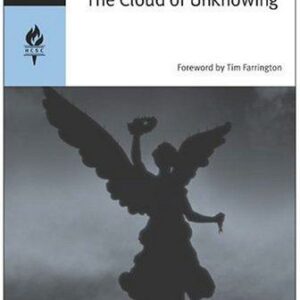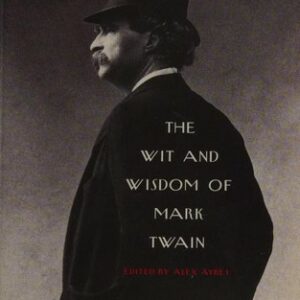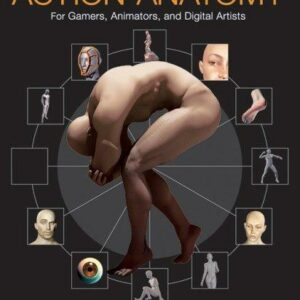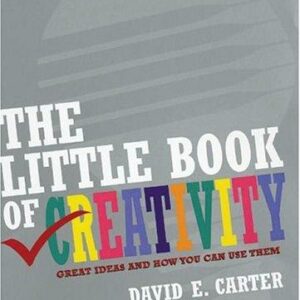Biased
$18.00
| Title | Range | Discount |
|---|---|---|
| Trade Discount | 5 + | 25% |
- Description
- Additional information
Description
“Poignant….important and illuminating.”—The New York Times Book Review
“Groundbreaking.”—Bryan Stevenson, New York Times bestselling author of Just Mercy
From one of the world’s leading experts on unconscious racial bias come stories, science, and strategies to address one of the central controversies of our time
How do we talk about bias? How do we address racial disparities and inequities? What role do our institutions play in creating, maintaining, and magnifying those inequities? What role do we play? With a perspective that is at once scientific, investigative, and informed by personal experience, Dr. Jennifer Eberhardt offers us the language and courage we need to face one of the biggest and most troubling issues of our time. She exposes racial bias at all levels of society—in our neighborhoods, schools, workplaces, and criminal justice system. Yet she also offers us tools to address it. Eberhardt shows us how we can be vulnerable to bias but not doomed to live under its grip. Racial bias is a problem that we all have a role to play in solving.Winner of the Williams James Book Award from the American Psychological Association
Winner of the Society for Personality and Social Psychology Book Prize
Nonfiction Runner-Up for the Dayton Literary Peace Prize
“A fascinating new book… [Dr. Jennifer Eberhardt is] a genius.”—Trevor Noah, The Daily Show with Trevor Noah
“Groundbreaking.”—Bryan Stevenson, New York Times bestselling author of Just Mercy
“Powerful…useful for those new to the topic as well as those well-versed in the topic…Eberhardt abandons the jargon-speak of academic research and speaks to the reader’s head, heart, and soul…[and] will make you think about the news, your neighborhood, your work place and yourself with fresh eyes.”—Forbes
“An immensely informative and insightful analysis of race-based stereotypes. [Eberhardt] also offers practical suggestions for managing mechanisms of prejudice that ‘are rooted in the structures of our brains.’”—Psychology Today
“Explores the reasons for bias of all kinds — racial, religious, gender and more — and lays out research-based strategies that can short-circuit our initial prejudices.”—New York Post
“[A] timely, exhaustive investigation of how bias infiltrates every sector of public and private life… Eberhardt offers tips for reforming business practices, police departments, and day-to-day interactions in pursuit of a fairer world for everyone.”—Esquire.com
“Combining storytelling with a deep dive into the science of implicit bias, Eberhardt explains how bias and prejudice form—and she describes their pernicious effects on all of us. But she doesn’t stop at the problem: Her book shines a spotlight on what we can do to fight bias at a personal and institutional level.”—Greater Good Magazine
“Compelling and provocative, this is a game-changing book about how unconscious racial bias impacts our society and what each of us can do about it.”—Kirkus Reviews (starred review)
“Jennifer Eberhardt’s work is essential to helping us understand racial inequalities in our country and around the world.”—Michelle Alexander, author of New York Times bestseller The New Jim Crow
“In accessible language and compelling examples, Dr. Eberhardt draws on copious empirical research to challenge the idea of human objectivity and the tragic outcomes of this false belief. …This book should be required reading for everyone.”—Robin DiAngelo, author of White Fragility
“This book helps us to scientifically view how racial bias works in our own minds and throughout society. We could not ask for a better guide to understand this reality than Jennifer Eberhardt. Her research reveals critical information that can help leaders better understand how biases can impact our judgment and how we are perceived by the communities we are sworn to serve.”—Kamala D. Harris, United States Senator from California
“Jennifer is one of the great thinkers and one of the great voices of our time…I believe her book will change the conversation on race in our society–and perhaps our society itself.”—Carol Dweck, author of New York Times bestseller Mindset: The New Psychology of Success
“Drawing on her pioneering research, Jennifer Eberhardt’s new book offers a powerful exploration of how racial bias seeps into our classrooms, college campuses, police departments, and businesses.”—Bruce Western, author of Punishment and Inequality in America and Professor of Sociology, Columbia University
“Biased is deeply relevant to education and other fields of work, within the U.S. and globally. Dr. Eberhardt’s work offers a touchstone for educators, leaders, lawmakers, and all those who want a society that serves everyone equally.”—Linda Darling-Hammond, author of The Flat World and Education: How America’s Commitment to Equity will Determine our Future
“This is not someone who is just doing work in the ivory tower of a university. This is someone who is really out in the trenches working with police departments and the criminal justice system.”—Chris Magnus, Chief of Police, Tucson, Arizona
“She is saying things that make people uncomfortable, but she has the evidence to back up the reality of what’s she’s describing… [her work is]…original, provocative, and rigorous. I think she has changed the way we all think about the American dilemma of race.”—Susan Fiske, Psychologist, Princeton University
“The hope for progress is greatly increased by Jennifer Eberhardt’s groundbreaking new book on implicit bias. Biased presents the science of bias with rare insight and accessibility, but it is also a work with the power and craft to make us see why overcoming racial bias is so critical.”—Bryan Stevenson, New York Times bestselling author of Just MercyJennifer Eberhardt is a professor of psychology at Stanford and a recipient of a 2014 MacArthur “genius” grant. She has been elected to the National Academy of Sciences, the American Academy of Arts and Sciences, and was named one of Foreign Policy‘s 100 Leading Global Thinkers. She is co-founder and co-director of SPARQ (Social Psychological Answers to Real-World Questions), a Stanford Center that brings together researchers and practitioners to address significant social problems.Introduction
I walked in through a sea of navy-blue uniforms. The auditorium was filled to capacity, with 132 sworn members of the Oakland Police Department sitting motionless with perfect posture: erect, arms crossed. As I walked down the aisle to take the stage, I could not see their faces, but I already knew what they were thinking.
The road to this particular presentation was a long one. The police force was still recovering from a major scandal that had left a legacy of distrust in the community. I was just wrapping up a two-year report that was about to be released to the public—one of the final steps required by the federal oversight team brought in to investigate ex- tensive civil rights violations by members of this department—and I didn’t want the police to be blindsided by our findings. Many in the community were calling for an end to racial profiling. They wanted fair treatment. They were demanding justice. Many in the police de- partment felt they were delivering that justice every day—sometimes at great sacrifice. I wanted to help the officers to understand the in- sidious ways in which implicit bias could act on human decision mak- ing, despite the officers’ noble intentions and deliberate efforts.
Reporters were pressuring me to discuss our findings before the report was released, but I couldn’t; there was too much at stake. I first wanted the department to be prepared and to be willing to work with our team as they crafted solutions to any problems the report would reveal.
I was tired—exhausted, really—from working on the report around the clock for months, to the neglect of my teaching, my hus- band, and our three sons. As I marched up the aisle, I could feel a chill in the room.
I made it to the stage. Although not exactly as modern or as high-tech as the classrooms at Stanford where I normally taught, the auditorium—with its wood-paneled walls and rows of cushioned red metal chairs—seemed familiar enough. I looked out at the faces in the crowd, searching for a connection. I found every face expression- less, their eyes distant. Each officer wore a crisp, clean uniform over a bulletproof vest. At the waist was a duty belt holding the essential tools of their trade: handcuffs, Taser, OC pepper spray, and Glock 17 9 mm firearm. The officers looked ready for duty, but no one seemed ready to engage with me.
For the first time in my career, I was facing a hostile crowd. There was no booing or yelling. There were no verbal complaints of any kind—just a steely silence that was more eloquent than any words. I tried to make a few jokes. Nothing landed. I led them through an interactive “shoot–don’t shoot” simulation, which was always a crowd- pleaser. The exercise fell flat. I showed a few movie clips that in other places triggered bursts of laughter. Still nothing.
Finally, I caught the eye of LeRonne Armstrong, a captain whom I’d worked with before on trainings designed to improve police- community relations. I knew he understood the importance of delivering this message to law enforcement. I was relieved to see his face, until I realized that his expression was one of concern for me. He was looking around the crowd with the same worry I was trying not to let show onstage. I saw him shifting uncomfortably in his seat. How, I wondered, can I possibly deliver this training ten more times to units across the department when I’m not really sure whether I can make it through this first session?
Eventually, I stopped with the lessons, and the data graphs, and the images, and the jokes, and the movie clips. I decided to veer off my usual script and share a personal story.
I explained that some years ago my son Everett and I were on a plane. He was five years old, wide-eyed, and trying to take it all in. He looked around and saw a black passenger. He said, “Hey, that guy looks like Daddy.” I looked at the man, and truth be told, he did not look anything like Daddy—not in any way. I looked around for any- one else Everett might be referring to. But there was only one black man on the plane.
I couldn’t help but be struck by the irony: the race researcher having to explain to her own black child that not all black people look alike. But then I paused and thought about the fact that kids see the world differently from adults. Maybe Everett was seeing something that I missed. I decided to take another look.
I checked the guy’s height. No resemblance there. He was several inches shorter than my husband. I studied his face. There was nothing in his features that looked familiar. I looked at his skin color. No similarity there either. Then I took a look at his hair. This man had dreadlocks flowing down his back. Everett’s father is bald.
I gathered my thoughts and turned to my son, prepared to lecture him in the way that I might inform an unobservant student in my class. But before I could begin, he looked up at me and said, “I hope that man doesn’t rob the plane.”
Maybe I didn’t get that right. “What did you say?” I asked him, wishing I had not heard what I heard. And he said it again, as inno- cently and as sweetly as you can imagine from a bright-eyed boy trying to understand the world: “I hope he doesn’t rob the plane.”
I was on the brink of being upset. “Why would you say that?” I asked as gently as I could. “You know Daddy wouldn’t rob a plane.” “Yes,” he said. “I know.”
“Well, why did you say that?” This time my voice dropped an octave and turned sharp.
Everett looked up at me with a really sad face and said very sol- emnly, “I don’t know why I said that. I don’t know why I was think- ing that.”
Just telling that story reminded me of how much that moment hurt. I took a deep breath, and when I looked back out at the crowd in the auditorium, I saw that the expressions had changed. Their eyes had softened. They were no longer uniformed police officers, and I was no longer a university researcher. We were parents, unable to pro- tect our children from a world that is often bewildering and frighten- ing, a world that influences them so profoundly, so insidiously, and so unconsciously that they—and we—don’t know why we think the way we do.
With a heavy heart, I continued with my point: “We are living with such severe racial stratification that even a five-year-old can tell us what’s supposed to happen next. Even with no malice—even with no hatred—the black-crime association made its way into the mind of my five-year-old son, into all of our children, into all of us.”
I finished the training and invited the audience to come up to ask questions or share their stories.
I had been warned that no one would, but one officer did stay behind in the emptying auditorium. As he approached the stage, I stepped down to meet him. “Your story about your son on the plane reminded me of an experience I had on the street. It’s something I haven’t thought about in a long time,” the of- ficer told me.
“I was out one day, working undercover,” the officer said, “and I saw a guy, at a distance, who didn’t look right. This guy looked similar to me—you know, black, same build, same height. But this guy had a scruffy beard, unkempt hair, ripped clothes, and he looked like he was up to no good. The guy began approaching me, and as he was getting closer, I had a feeling that he had a gun on him. Some- thing’s off with this guy, I thought. This dude ain’t right.
“So the guy is coming down a hill, near the front of a nice office building—one of those big office towers with glass walls. And as the guy is approaching, I couldn’t shake the feeling that he was armed and dangerous.
“As I got closer to the building, I lost him for a second and I began to feel panicked. Suddenly I see the guy again, but this time he is inside the office building. I could see the guy clearly through the glass wall. He was walking inside the building—in the same direction and at the same pace as I was walking.
“Something was wrong. When I quickened my pace, I could see him quicken his pace. And finally, I decided to stop abruptly, turn, and confront the guy.
“He stops too, and I look at him face-to-face,” the officer said to me. “And when I look in his eyes, a shock went through me. I real- ized that I was staring at myself. I was the person I feared. I was star- ing at my own reflection through the mirrored wall. That entire time, I was tailing myself; I was profiling myself.”
The stories kept coming. At every single session, someone came up and told me a story—stories that enriched my understanding not only of police-community relations but also of our human predicament.
This book is an examination of implicit bias—what it is, where it comes from, how it affects us, and how we can address it. Implicit bias is not a new way of calling someone a racist. In fact, you don’t have to be a racist at all to be influenced by it. Implicit bias is a kind of distorting lens that’s a product of both the architecture of our brain and the disparities in our society.
We all have ideas about race, even the most open-minded among us. Those ideas have the power to bias our perception, our attention, our memory, and our actions—all despite our conscious awareness or deliberate intentions. Our ideas about race are shaped by the stereo- types to which we are exposed on a daily basis. And one of the strongest stereotypes in American society associates blacks with criminality.
This stereotypic association is so powerful that the mere presence of a black face, even one that appears so fleetingly we are unaware of it, can cause us to see weapons more quickly—or to imagine weapons that are not there. The mere thought of violent crime can lead us to shift our eyes away from a white face and toward a black face. And although looking black is not a crime, jurors are more likely to deliver a death sentence to black felons who have stereotypically black facial features than to those who do not, at least when their victims are white.
Bias can lead to racial disparities in everything from preschool suspensions to corporate leadership. And the disparities themselves then bolster our biases. For example, knowing that a disproportionate amount of violent crime is committed by young black men can bias judgments about black people more generally. That affects how blacks are seen in all manner of situations—whether sitting in a classroom or a coffee shop, whether leading a Fortune 500 company or fighting a California wildfire. The stereotypes shadow them.
In this book, I’ll show you the many surprising places and ways that racial bias affects all sorts of decisions we make during the normal course of our lives—the homes we buy, the people we hire, the way we treat our neighbors. Bias is not limited to one domain of life. It is not limited to one profession, one race, or one country. It is also not limited to one stereotypic association. This book grew from my re- search on the black-crime association, yet it is not the only association that matters and blacks are not the only group affected. Probing the role of implicit bias in the criminal justice arena can teach us broader lessons about who we are, where we’ve been, and what we can be- come, regardless of our social group or the groups toward which we may be biased.
People can hold biases based on all sorts of characteristics—skin color, age, weight, ethnic origin, accent, disability, height, gender. I talk a lot about race, specifically about blacks and whites, because those two groups have been studied the most by researchers investi- gating bias. And because the racial dynamics between blacks and whites are dramatic, consequential, and enduring. In the United States, those tensions over centuries have even set the tone for how other social groups are regarded.
Confronting implicit bias requires us to look in the mirror. To understand the influence of implicit racial bias requires us to stare into our own eyes—much as the undercover police officer who found that he had been tailing himself had done—to face how readily stereo- types and unconscious associations can shape our reality. By acknowl- edging the distorting lens of fear and bias, we move one step closer to clearly seeing each other. And we move one step closer to clearly seeing the social harms—the devastation—that bias can leave in its wake.
Neither our evolutionary path nor our present culture dooms us to be held hostage by bias. Change requires a kind of open-minded attention that is well within our reach. There are successful approaches we can learn from and new ways of thinking that we can build upon, whether we are trying to change ourselves or the settings where we live, work, and learn.
This book is a representation of the journey I have taken—the unexpected findings I have uncovered, the stories I have heard, the struggles I have encountered, and the triumphs I have been buttressed by. I invite you to join me.US
Additional information
| Weight | 10 oz |
|---|---|
| Dimensions | 0.6100 × 4.5000 × 7.2000 in |
| Imprint | |
| ISBN-13 | |
| Author | |
| Audience | |
| BISAC | |
| Subjects | anti racist book, blm, anti-racism, cops, bias, white privilege, black history books, criminal justice, implicit bias, SOC004000, racism books, antiracism, blindspot, criminal justice books, anti racism, systemic racism, anti racism books for kids, antiracist book, antiracism books, anti racism books, race book, justice, black lives matter, police, psychology, african american, social justice, PSY017000, black, Prejudice, race, racism, prison, black history, shapes, juneteenth, antiracist, books about racism, books on racism, police brutality, fragility |
| Format |











